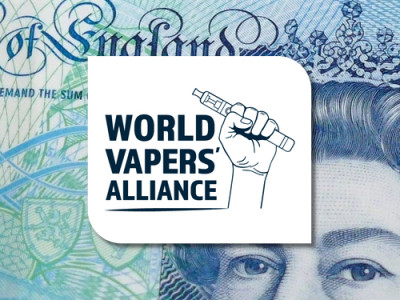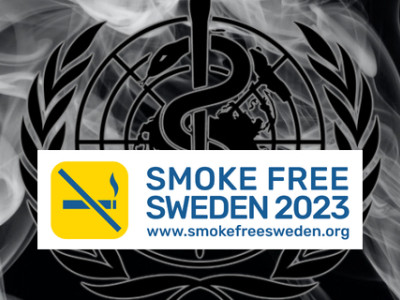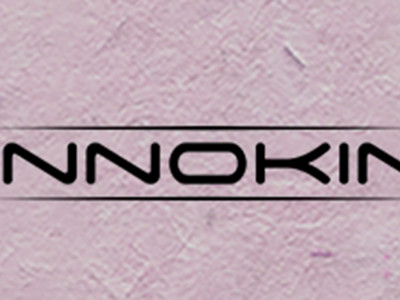As over 50 international experts on tobacco and nicotine gathered to join hundreds of delegates in Warsaw, Poland for the ninth annual Global Forum on Nicotine (#GFN22), the conference organisers are proud to host the launch of a new study by distinguished tobacco dependence researcher Dr Lars M. Ramström. Dr Ramström’s research demonstrates that integrating tobacco harm reduction to existing tobacco control measures holds the key to hastening an end to smoking.
The Global Forum on Nicotine is the only international conference to focus on the role of safer nicotine products (nicotine vapes or e-cigarettes, nicotine pouches, oral tobaccos such as Swedish-style snus and heated tobacco products) that help people switch away from smoking, in an approach called tobacco harm reduction.
Harm reduction is an evidence-based public health approach consisting of pragmatic policies, regulations and actions to reduce health risks by, for example, providing access to safer forms of products or substances. People smoke to use nicotine, and smoking is the world’s leading cause of non-communicable disease with an estimated eight million smoking-related deaths each year. Nicotine does not cause cancer. But when tobacco burns, it releases thousands of toxic chemicals, many of which are carcinogenic, that are then inhaled in smoke.
Over three days in the Polish capital, policymakers, medical professionals, academics and people who successfully quit smoking by switching to safer alternatives explored topics under the conference theme, Tobacco harm reduction: here for good. Dr Ramström’s study cements the evidential basis for why this needs to be the case.
What’s the context for Dr Ramström’s research?
In 2005, the Framework Convention on Tobacco Control (FCTC) came into force. Developed in response to the global nature of the public health crisis caused by tobacco use and smoking, it was the first international treaty negotiated through the World Health Organization (WHO).[i] Two years later, the WHO launched MPOWER, a process and monitoring mechanism to implement the FCTC. Comprising six tobacco control measures, MPOWER set out to: Monitor tobacco use and prevention policies; Protect people from tobacco smoke; Offer help to quit tobacco use; Warn about the dangers of tobacco; Enforce bans on tobacco advertising, promotion and sponsorship; and Raise taxes on tobacco.[ii]
In its most recent progress report, the WHO stated that 5.3 billion people were ‘covered’ by at least one MPOWER measure to the ‘highest level of achievement’.[iii] But nearly 30 per cent of countries who have signed up to the FCTC have not enacted a single MPOWER measure. Closer analysis shows that, of the 49 countries with no measures in place, 41 are low and middle-income countries (LMIC).[iv] This is significant because 80 per cent of the world’s 1.1bn smokers live in LMIC, the countries least able to support people to quit, or to treat smoking-related diseases. It is also worth noting that the total number of smokers has remained unchanged since 2000, despite MPOWER’s measures being launched 15 years ago. This is in part a result of the WHO’s reluctance to endorse tobacco harm reduction, despite harm reduction being named as the third pillar of tobacco control alongside demand and supply reduction in the FCTC.
How was the research carried out?
To assess MPOWER’s effectiveness in reducing the annual toll of eight million smoking-related deaths worldwide, Dr Ramström has conducted original research that compares the extent of implementation of the MPOWER tobacco control measures and tobacco-related death rates across Europe.
To do this, he used figures provided by the Tobacco Control Scale (TCS), a joint initiative by the Association of European Cancer Leagues and the Catalan Institute of Oncology, that gives each European country a score out of a possible 100.[v] The higher the score, the greater the level of MPOWER implementation. Data on tobacco-related mortality were obtained from The Global Burden of Disease (GBD), a comprehensive epidemiological study led by the Institute for Health Metrics and Evaluation at the University of Washington, Seattle.[vi] The GBD is a tool that quantifies health loss from hundreds of diseases, injuries, and risk factors including tobacco use.
What does the research show?
After analysing his results for European women, Dr Ramström found that there was no correlation between tobacco-related mortality and a country’s level of implementation of MPOWER measures. This research shows that, at least for Europe, the extent to which a country has adopted and implemented MPOWER has no influence on reducing the number of women whose deaths are attributable to tobacco.
When looking at the data for Europe’s men, Dr Ramström found no strong relationship between tobacco control policies and tobacco-related mortality. In fact, just 11% of the variance in mortality could be explained by the level of implementation of MPOWER measures.
In some countries, such as the UK, Ireland, Iceland and France, low tobacco-related mortality among men was linked to a high level of MPOWER implementation. For these countries, around 100 deaths per 100,000 were attributable to tobacco (versus more than 350 for Ukraine and just under 300 for Russia), while their TCS scores were between 70-80. But in others, such as Germany and Switzerland, the same low rate of tobacco-related mortality (around 100 deaths per 100,000) was observed, despite these countries having implemented MPOWER at much lower levels (both Germany and Switzerland had TCS scores of around 40, half that of the UK’s score of 80).
Crucially, Dr Ramström’s research also highlights the positive impact on tobacco-related mortality rates of tobacco harm reduction through the use of safer nicotine products. The two countries with the lowest tobacco-related mortality for men were Sweden and Norway. In these two countries a large proportion of male smokers have switched from cigarettes to Swedish-style snus, a low-risk nicotine product that is freely available in both but is banned from sale in the EU, except in Sweden. So, while Sweden’s TCS score is below average (around 52), it has achieved a lower rate of tobacco-related mortality than all the countries that have higher levels of MPOWER implementation except Norway.
The effectiveness of safer nicotine products to reduce tobacco-related mortality is further demonstrated by the comparison between Sweden’s men, who have adopted snus in large numbers, and its women who have not switched so readily. Despite being exposed to the same level of implementation of MPOWER measures, tobacco-related mortality among Sweden’s women was above average when compared to the rest of Europe’s women while Swedish and Norwegian men shared the lowest tobacco-related mortality rates across the continent.
Speaking about his findings, Dr Ramström said: “My research demonstrates that MPOWER is not working as it should in Europe. It also shows that switching to Swedish-style snus is a more effective strategy to reduce tobacco-related mortality than the tobacco control measures endorsed by the WHO.
“The key to reducing tobacco-related mortality is tobacco harm reduction through the transition from combustible cigarettes to safer nicotine products, which must be made easier for people who smoke. These include not just Swedish-style snus but also vapes, tobacco-free nicotine pouches and heated tobacco products.
“Going forwards, the WHO and others must heed modern science. They need to move from rejecting tobacco harm reduction to promoting it. Governments can also play their part by adopting rates of taxation that make low-risk products cheaper than cigarettes and the ban of snus in the EU must be overturned.”
Gerry Stimson, Emeritus Professor at Imperial College London and co-founder of the Global Forum on Nicotine said: “The standard package of tobacco control interventions recommended by the World Health Organization, promoted through its MPOWER programme, is failing to deliver. As Dr Ramström’s research makes clear, there is close to zero correlation between the implementation of MPOWER and tobacco-related mortality.
“Adoption of safer nicotine is a low-cost intervention that is reducing smoking, while the standard package recommended by the WHO to governments worldwide is not. The WHO and all governments must follow the evidence on harm reduction in order to realise the huge potential of safer nicotine products, the availability of which can help bring about an end to smoking.
“Dr Ramström’s findings also add further weight to our calls for the WHO to update its MPOWER implementation policy to recognise the importance of tobacco harm reduction. To do this, the MPOWER strategy should incorporate additional elements, developing into an EMPOWERED strategy, with the inclusion of ‘Engage with affected communities’, ‘Encourage smokers to switch to safer nicotine products’ and ‘Deliver accurate information about safer alternatives.”
References:
[i] The full text of the Framework Convention on Tobacco Control can be accessed at:
https://fctc.who.int/publications/i/item/9241591013
[ii] In practical terms MPOWER’s measures include interventions such as price increases through higher taxation; bans/restrictions on smoking in public and work places; comprehensive bans on the advertising and promotion of all tobacco products; large, direct health warnings on tobacco product packaging; better consumer information, spending on public information campaigns and treatment to help dependent smokers stop.
[iii] WHO. WHO report on global tobacco epidemic: addressing new and emerging products 2021. WHO, 2021. https://www.who.int/teams/health-promotion/tobacco-control/global-tobacco-report-2021.
[iv] WHO. WHO report on global tobacco epidemic: addressing new and emerging products 2021. WHO, 2021. https://www.who.int/teams/health-promotion/tobacco-control/global-tobacco-report-2021
[v] Tobacco Control Scale. Association of European Cancer Leagues and the Catalan Institute of Oncology. https://www.tobaccocontrolscale.org/
[vi] Global Burden of Disease. Institute for Health Metrics and Evaluation. https://www.healthdata.org/gbd/2019
Dave Cross
Journalist at POTVDave is a freelance writer; with articles on music, motorbikes, football, pop-science, vaping and tobacco harm reduction in Sounds, Melody Maker, UBG, AWoL, Bike, When Saturday Comes, Vape News Magazine, and syndicated across the Johnston Press group. He was published in an anthology of “Greatest Football Writing”, but still believes this was a mistake. Dave contributes sketches to comedy shows and used to co-host a radio sketch show. He’s worked with numerous vape companies to develop content for their websites.
Join the discussion
Harm Reduction For The Rich
The United Kingdom risks becoming a harm reduction country only for the wealthy, according to Michael Landl of the World Vapers’ Alliance
CAPHRA Highlights Tobacco Control Flaws
The Coalition of Asia Pacific Tobacco Harm Reduction Advocates highlights the flaws in tobacco control which has led to the rise of black market in Australia
A Missed Opportunity at COP10
The Smoke Free Sweden movement says that COP10 was a missed opportunity to save millions of lives
COP10: Promote Tobacco Harm Reduction
Experts with Smoke Free Sweden are emphasising the urgent need for a Tobacco Harm Reduction approach at COP10












